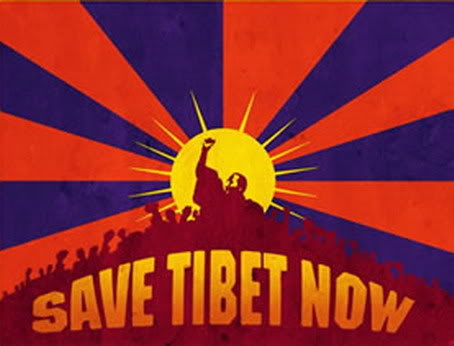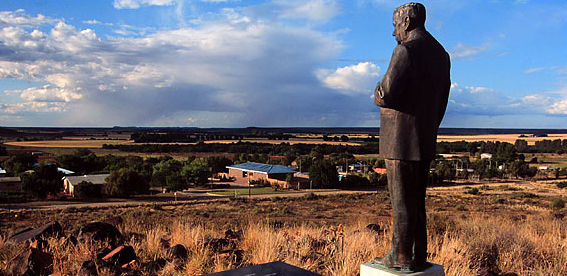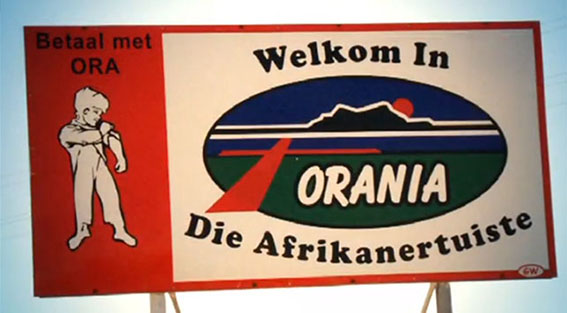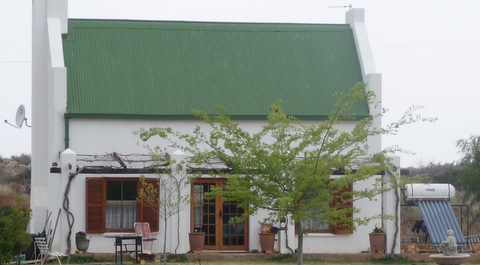A Home of Our Own
F. Roger Devlin, American Renaissance, June 21, 2013

Subscribe to future audio versions of AmRen articles here.
Arthur Kemp, Nova Europa: European Survival Strategy in a Darkening World, Ostara Publications, 2013, $5.95 kindle download from Amazon, 88 pp.
Those who attended the 2013 American Renaissance conference saw a change in mood and emphasis from previous gatherings — probably the result of watching Barack Obama coast to reelection with just 39% of the white vote. The new feeling is that the strategy of “awakening” whites and gaining power through democratic electoral means is not working. The demographic shift is too fast and our own progress is too slow; the opportunities we thought we saw are vanishing, and a strategic reorientation is becoming inevitable.
This reorientation will be toward the creation of autonomous white territories that can eventually become independent states, and Arthur Kemp’s Nova Europa is a fine introduction to this subject. The starting point and greatest strength of his thinking is a firm grasp of the territorial nature of politics. In Mr. Kemp’s own words:
Political power comes from physical occupation: not historical rights, not title deeds, not moral rights — only occupation. Those people who occupy a territory determine the nature of the society in that region.
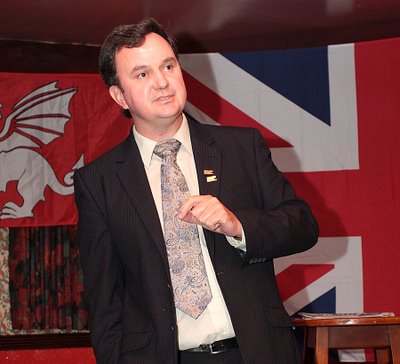
Rhodesian-born, Arthur Kemp worked as a journalist in South Africa, where he was expelled from the Conservative Party for opposing apartheid in favor of Afrikaner separatism. He now lives in Britain.
In Mr. Kemp’s view, a failure to recognize this reality was the Achilles heel of South Africa’s apartheid system. The Afrikaner electorate believed that a stable European society could be built in a majority-black territory, and that with the right laws they could enjoy forever the benefits of cheap black labor while preventing blacks from determining the nature of South African society. Far from preventing black majority rule, this system was an incubator for it. Apartheid made whites dependent on blacks, even as it multiplied the numbers of blacks.
Immigrant “rioting” in Europe today is also to a large extent a political struggle over territory, an attempt by hostile aliens to impose their own sovereignty in areas where they are the majority. Like apartheid, the multicultural thinking that led to mass immigration is a fantasy because it ignores the fundamentally territorial nature of political power.
So what must whites do to ensure their physical and cultural survival? They must establish homelands where they are the majority and can protect their racial and cultural integrity. Blacks have many such homelands; the Chinese have a homeland; even Jews now have a homeland. Only white people no longer have a place to call home, and that is why only our survival is threatened.
When mainstream journalists discuss demographic change, they like to call it “the mass movement of peoples,” a conveniently neutral phrase that masks the reality that all this “movement” is in one direction — into white homelands. Although many whites are unaware of it, the norm in most of the world is for dominant majorities to enjoy special legal protections. As Mr. Kemp notes:
Japan, China, India, most sub-Saharan African states, most north African states, most middle-Eastern states and, of course, Israel, are ethnostates with varying degrees of legal enforcement designed to ensure that they keep their homogeneity.
This sensible policy prevents ethnic conflicts before they can arise.
Even many white liberals favor such policies — as long as the beneficiaries are not white. They will happily help protect the Tibetans or the Indian tribes of the Amazon from alien incursion. Why is it so difficult for such people to see that it is fair and right for their own race to enjoy the same protections?
Europeans today even fit the definition of those who wear the ultimate badge of fashionable victimhood, indigenous people. Europeans have a continuous historical link with a particular territory, are characterized by large degree of homogeneity, and are being colonized by aliens.
“Indigenous homelands,” in which natives enjoy special status and protection, have been established all over the world. Brazil alone has 672 such territories; tiny Belize has found room for eight; and dozens more can be found in Australia, Canada, the United States, India, Pakistan and all over Latin America. The United Nations has issued a “Declaration on the Rights of Indigenous Peoples” and maintains a “Permanent Forum on Indigenous Issues.”
The permanent forum would do well to expand its horizons. As Mr. Kemp points out, for several decades now the tables have been turned, and Europeans are in retreat from the peoples they once colonized. Mr. Kemp offers the following facts:
• More than half the residents of Brussels, the “capital of Europe,” are of Third-World origin.
• In 2012, 53 percent of children in Viennese schools were of immigrant origin.
• In the United States, by 2019 a majority of schoolchildren will be non-white.
• The foreign population of Spain rose from 3.2 percent in 1996 to 13.4 percent 11 years later.
• According to a 2004 study, there were 14 million persons of foreign ancestry in France, more than 20 percent of the population.
• In 2009, the Dutch government reported that about 20 percent of the population had “non-Western” roots.
• A 2011 census revealed that the white share of the British population is falling by nearly 8 percent of the total each decade.
As Mr. Kemp notes, “there is currently no area on earth which has been specifically set aside for European people.” Why aren’t the heirs of Western civilization being afforded protections routinely granted to the hunter-gatherers of the Amazon jungle?
It cannot be because such protection would be “white supremacy.” This fashionable bogeyman — imagining for a moment that anybody really advocated it — would be incompatible with the ethnic nationalism Mr. Kemp advocates: “self-determination specifically eschews the claim to rule over others.” Mr. Kemp — a strong critic of apartheid — argues that the demand for black self-rule in South Africa validates white self-rule in Europe and North America.
Nor must a program of territorial independence involve any claim to superiority. Mr. Kemp argues that “the contribution of European man to the world and the well-being of all people is unsurpassed,” but he demands no more for his own people than he would be prepared to grant to pygmies or bushmen.
So far, resistance to mass, non-white immigration has come from nationalist political parties, which have tried to enter government through democratic means. Nowhere have they achieved much success. This is largely because Western democracy has, in Mr. Kemp’s words, “turned into rule by the wealthy elite and powerful lobbies.” While mass immigration is unpopular among ordinary Europeans, social and political elites are fanatically committed to it.
Furthermore, non-whites everywhere vote as a block for the most pro-immigrant parties. Whites not only do not vote along racial lines, but even view such block-voting as somehow morally wrong. This means it is unlikely that any nationalist party will attain power within the brief time whites can be expected to retain their majorities.
Whites must not reject democratic participation. As Mr. Kemp writes, it “remains the best and easiest way to spread the message of ethnonationalism, which is vital for any potential solution to the crisis.” A nationalist party might yet come to power in one or more European countries and reverse the demographic crisis. Even if it occurred in only a single small country, such a development would send shock waves across the continent. The elites have good reason to fear nationalist parties.
But white patriots must adopt new avenues of action as well. Specifically, Mr. Kemp believes they must start building autonomous European communities wherever it is practically possible to do so, and ultimately create a European ethnostate (or states).
The great advantage of creating European communities is that it does not require winning over majorities. Meaningful concrete steps can be taken today by the minority of whites who understand the looming catastrophe. Eventually, such communities could become states. These communities would eventually draw from around the world Europeans who understand the genocidal consequences of multiculturalism. And where else will even liberals find neighborhoods with “good schools” and “low crime?”
The South African town of Orania is a good example of what whites must do. A small minority of Afrikaners have long shared Mr. Kemp’s view that white reliance on black labor was ultimately responsible for the downfall of white South Africa. In 1990, as the demise of apartheid visibly approached, a group of white pioneers bought the deserted village of Orania in the Northern Cape Province for a nominal fee. They chose the town’s barren and seemingly unpromising location for good reasons.
The Northern Cape, with its sparse population, presented the only area of South Africa which could effectively be colonized by Afrikaners with the least amount of disruption to the rest of the country. In 2010, the entire Northern Cape had only 2.3% of the country’s population. Majority Afrikaner occupation could be achieved with only 500,000 or so Afrikaners moving to the area.
The town was founded on three principles: the Oranians were to have their own land, use only their own labor, and create their own institutions. From around two dozen pioneers, it has grown to a current population of over 1,500. The town boasts two schools and seventy local businesses, and is “possibly the only local authority in all South Africa which actually balanced its books in 2012.”
In 2004, Orania introduced its own currency, the Ora, which is a valid method of payment within the town borders. The Ora trades on par with the South African Rand and is underwritten by the local savings and credit union. The new currency keeps money within the community.
In 2012, the British Sunday Times, a paper not noted for white advocacy, had this to say about Orania:
Building sites are everywhere. Plots of land that went for £1,000 four years ago now change hands for £20,000. There are supermarkets, all manner of other shops, a doctor, dentist, lawyers, architects, two schools and a radio station. Orania has organised many trips to Israel to study Israeli farming techniques — the Israelis too have made the desert bloom. Orania exports jewelry to the whole of South Africa, air-freighted vegetables to British supermarkets and pecan nuts to China. The community is probably the greenest in South Africa: all farming is organic, everything is recycled and alternative energy is used whenever possible. People leave their keys in their cars, live with their doors open and children play, unmonitored, in the street until dark.
The Sunday Times reports that the Orania Council pays a £1,000 ($1,600) grant for every child born in the town. Local guide John Strydom says: “Recently growth has become explosive. It’s stretching us in every sinew. Our present land can house 25,000 people, but of course we’ll buy more land.” Not everyone thinks this is the best course; town founder Carel Boshoff says: “Expansion here may not be the right way. We need another Orania on the West Coast.”
The town’s greatest obstacle remains convincing fellow-Afrikaners to give up the short-term advantages of “cheap” black labor. As Mr. Kemp notes, white pioneers outside South Africa would not have this problem.
Another case study Mr. Kemp recommends is Israel, the world’s only avowed ethnostate. Theodor Hertzel was not the first to advocate a modern Jewish nation, but his 1896 book The Jewish State offered the first coherent plan for one.
The very next year the First Zionist Congress met in Basel to promote colonization. In 1901, the Jewish National Fund was created to buy land in Palestine. At the same time, a formal office for the Zionist Organization was established in Palestine to develop Jewish agriculture, settlement, education, land, finance, and immigration.
In 1917, Britain’s “Balfour Declaration” gave formal recognition at the international level of the Zionist effort and undertook to set aside parts of Palestine for a national home for the Jewish people. By 1923, 40,000 Jews had migrated to Palestine; by 1939 another 382,000 had arrived; several hundred thousand more came during the war and the early post-war period. On 14 May 1948, the state of Israel declared independence. All this happened within 53 years of Herzl’s publishing his tract!
Whites can learn a great deal from the Zionist example, not all of it positive. Israel illustrates the danger of choosing a territory that requires displacement of a different (and subsequently hostile) group. If the territory we select is not largely empty, like South Africa’s Northern Cape, then it must already have a strong white majority.
On the positive side, as Mr. Kemp notes, the Zionist movement demonstrated good practical sense in providing prospective settlers with economic opportunities.
People — even the most ideologically dedicated — will not move anywhere unless they are able to earn a living. The Zionists knew that once the small beachhead had been established, the very first priority was to create a substantial infrastructure which would provide newcomers with a means to make a living.
Orania, by contrast, got off to a slow start because it did not have anything comparable. For the first several years it attracted only affluent retirees.
What about Europeans?
Ironically, there are more people of European descent alive today than ever before in history. Yet, in the face of hostile non-white intrusion the majority seem capable of nothing more than running away to the ever-diminishing “good neighborhoods” left in their countries. As Mr. Kemp writes, “a ‘mass exodus’ to a European homeland, if it comes at all, will come only long after the formerly European nations are totally overrun.” Even then, many whites would rather disappear through childlessness, miscegenation, or eventual physical extermination by the more violent elements of other races.
Mr. Kemp notes that there are many whites–“ignorant, apathetic, small-minded whites”–we will never save. “Brutally put,” he writes, “we are better off without them.”
The most difficult step in creating a European ethnostate, then, is mustering the will. Once a significant number of whites achieves this, the next step would be the creation of a colonization company that would coordinate fundraising, buy land, create businesses, and organize immigration. Mr. Kemp notes that many professional services can now be delivered from anywhere on earth. The revolution in communications technology means setting up colonies would be much easier than in the Age of Exploration.
After mustering the political will, the second most difficult question is choosing and colonizing a territory. There are two approaches. One is to select a small town or region within an existing threatened Western state. The goal would be to build up a series of towns or regions that could at a later stage form a contiguous, independent state.
Colonization efforts should be directed toward filling a region with racially conscious Europeans attuned to the project, not simply relying on an existing white population; there is no use in having a European majority, as in Vermont, for example, that is hostile to the project. For more on this strategy, I recommend John Hunt Morgan’s article “Building White Communities” in the November, 2004 issue of American Renaissance.
The other approach is to target a demographically suitable and receptive nation. Eastern Europe is promising. Apart from significant Gypsy and Turkish populations, non-whites tend to comprise no more than two percent in the region. Russia’s non-European population is significant, but largely concentrated in the South and Siberia. Of course, Eastern Europe owes its freedom from mass non-white immigration to its isolation as part of the Soviet bloc and to its relative poverty. As it recovers and prospers, it will attract immigrants. On the other hand, many of these countries are suspicious of Western liberalism, and some even have governments that are aware of European decline and low birth rates.
Ultimately, as Herzl wrote, the territory will be determined by what can be realistically obtained and by common consensus among those who want to create the ethnostate.
Finally, Mr. Kemp reminds us:
[T]he demand for a European homeland is nothing less than the right which is accorded all other peoples on earth. If it is presented fairly, without hate or denigration of others, it will find accord with reasonably-minded people of all races.

